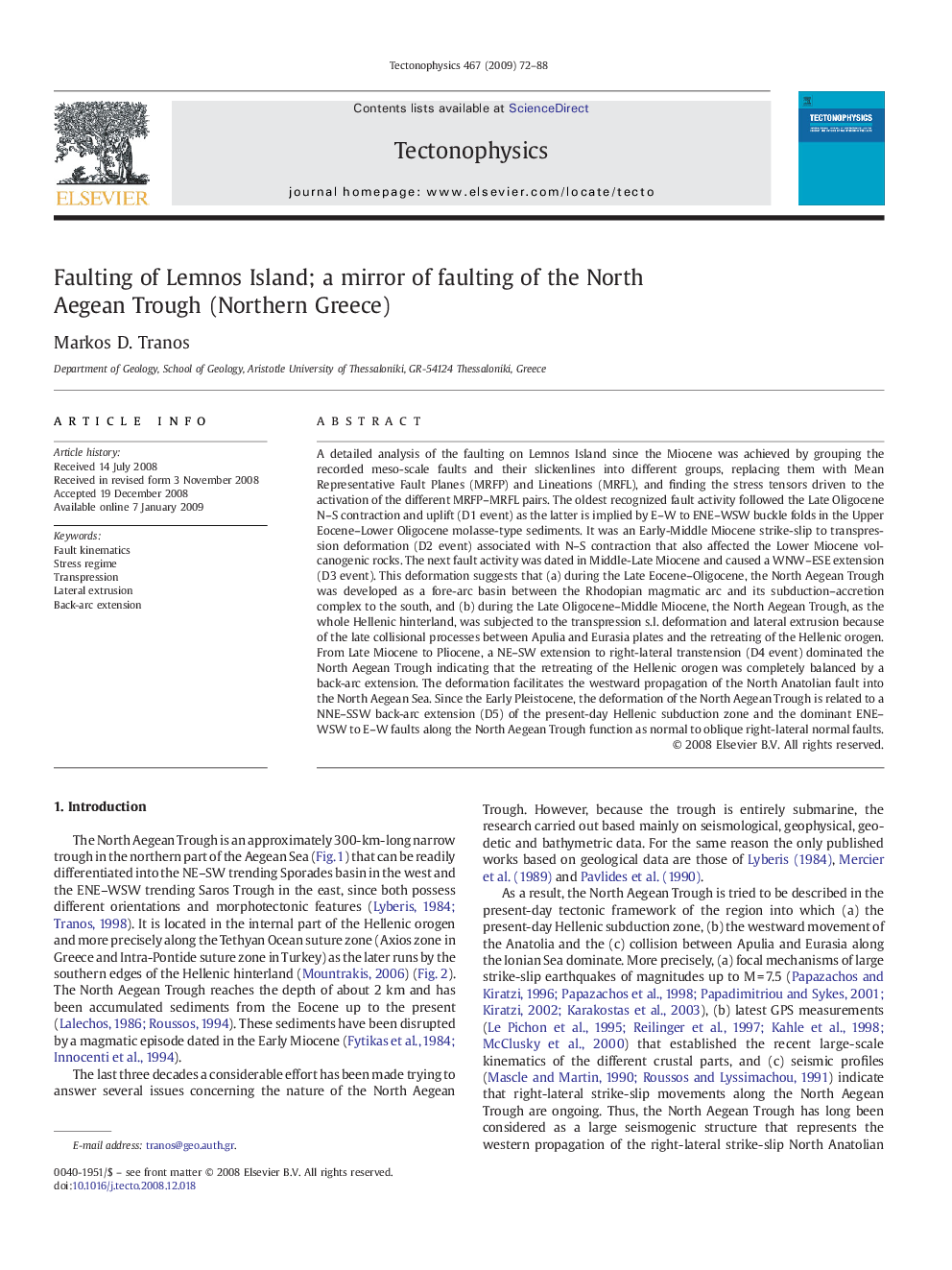| کد مقاله | کد نشریه | سال انتشار | مقاله انگلیسی | نسخه تمام متن |
|---|---|---|---|---|
| 4694138 | 1636897 | 2009 | 17 صفحه PDF | دانلود رایگان |

A detailed analysis of the faulting on Lemnos Island since the Miocene was achieved by grouping the recorded meso-scale faults and their slickenlines into different groups, replacing them with Mean Representative Fault Planes (MRFP) and Lineations (MRFL), and finding the stress tensors driven to the activation of the different MRFP–MRFL pairs. The oldest recognized fault activity followed the Late Oligocene N–S contraction and uplift (D1 event) as the latter is implied by E–W to ENE–WSW buckle folds in the Upper Eocene–Lower Oligocene molasse-type sediments. It was an Early-Middle Miocene strike-slip to transpression deformation (D2 event) associated with N–S contraction that also affected the Lower Miocene volcanogenic rocks. The next fault activity was dated in Middle-Late Miocene and caused a WNW–ESE extension (D3 event). This deformation suggests that (a) during the Late Eocene–Oligocene, the North Aegean Trough was developed as a fore-arc basin between the Rhodopian magmatic arc and its subduction–accretion complex to the south, and (b) during the Late Oligocene–Middle Miocene, the North Aegean Trough, as the whole Hellenic hinterland, was subjected to the transpression s.l. deformation and lateral extrusion because of the late collisional processes between Apulia and Eurasia plates and the retreating of the Hellenic orogen. From Late Miocene to Pliocene, a NE–SW extension to right-lateral transtension (D4 event) dominated the North Aegean Trough indicating that the retreating of the Hellenic orogen was completely balanced by a back-arc extension. The deformation facilitates the westward propagation of the North Anatolian fault into the North Aegean Sea. Since the Early Pleistocene, the deformation of the North Aegean Trough is related to a NNE–SSW back-arc extension (D5) of the present-day Hellenic subduction zone and the dominant ENE–WSW to E–W faults along the North Aegean Trough function as normal to oblique right-lateral normal faults.
Journal: Tectonophysics - Volume 467, Issues 1–4, 20 March 2009, Pages 72–88